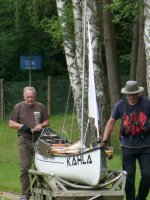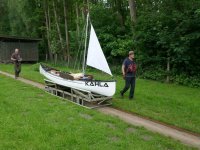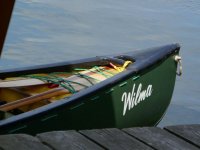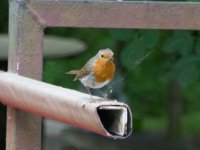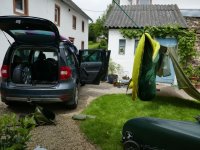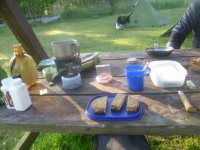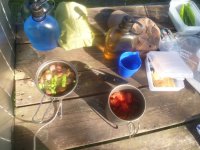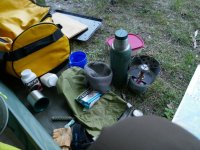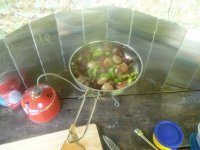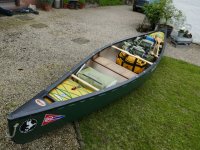Four friends, seven days, 100 km of paddling on a lake tour in Germany's most beautiful paddle region.


------------------
canoeing in the “Müritz National Park"
The ice and water masses of the Weichsel glacial period once sculpted channels, basins and valleys into the landscape, leaving behind over 200 lakes, some of which are connected by streams. Since the invention of the folding boat, canoeists have discovered the old raft and fishing routes and now paddle through mostly nature and landscape conservation areas. In addition to the number and variety, the exceptional quality of many waters and the surrounding areas is impressive and the reason for their protected status. Nevertheless, most of the waters are accessible to canoeists. There are clear water lakes with visibility depths of over 8 meters, in which rare bracken algae, pondweed and the vendace, a delicate schooling fish, thrive. The shy bittern hides in extensive reedbeds. Brook lampreys and fastidious mussel species live in some streams. Otters and beavers colonize almost the entire area. Attentive canoeists will be treated to the sight of the osprey, perhaps even the white-tailed eagle.
------------------
It started early for me ... with rain, cold temperatures and 750 kilometers of driving ahead of me ...
 .
. 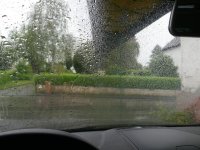 .
. 
Arrive, unpack, set up, get the boat ready and then ...
 .
.  .
. 
then finally the next morning the tour starts.
 .
. 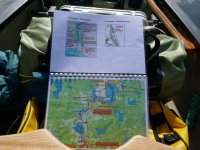



There are small connecting channels between the lakes that can be paddled - but some are simply not there and then you have to portage.
It's good if there is a trolley system.
 .
.  .
.  .
. 
 .
.  .
. 
Unfortunately, a friend injured his hand and elbow while paddling and could no longer paddle properly. We put him in the bow of a boat and continued the trip with his boat in tow.
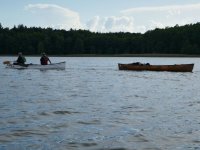
It's the same every time - as soon as we get ashore, the mosquitoes attack us and try to suck us dry.
Have I ever said that I think the Thermacell devices are great?
As soon as they are switched on, the mosquitoes are gone within 10 minutes.
 .
.  .
.  .
. 
regards
Michel


------------------
canoeing in the “Müritz National Park"
The ice and water masses of the Weichsel glacial period once sculpted channels, basins and valleys into the landscape, leaving behind over 200 lakes, some of which are connected by streams. Since the invention of the folding boat, canoeists have discovered the old raft and fishing routes and now paddle through mostly nature and landscape conservation areas. In addition to the number and variety, the exceptional quality of many waters and the surrounding areas is impressive and the reason for their protected status. Nevertheless, most of the waters are accessible to canoeists. There are clear water lakes with visibility depths of over 8 meters, in which rare bracken algae, pondweed and the vendace, a delicate schooling fish, thrive. The shy bittern hides in extensive reedbeds. Brook lampreys and fastidious mussel species live in some streams. Otters and beavers colonize almost the entire area. Attentive canoeists will be treated to the sight of the osprey, perhaps even the white-tailed eagle.
------------------
It started early for me ... with rain, cold temperatures and 750 kilometers of driving ahead of me ...
 .
.  .
. 
Arrive, unpack, set up, get the boat ready and then ...
 .
.  .
. 
then finally the next morning the tour starts.
 .
. 



There are small connecting channels between the lakes that can be paddled - but some are simply not there and then you have to portage.
It's good if there is a trolley system.
 .
.  .
.  .
. 
 .
.  .
. 
Unfortunately, a friend injured his hand and elbow while paddling and could no longer paddle properly. We put him in the bow of a boat and continued the trip with his boat in tow.

It's the same every time - as soon as we get ashore, the mosquitoes attack us and try to suck us dry.
Have I ever said that I think the Thermacell devices are great?
As soon as they are switched on, the mosquitoes are gone within 10 minutes.
 .
.  .
.  .
. 
regards
Michel
Last edited:














